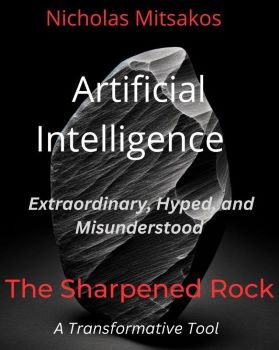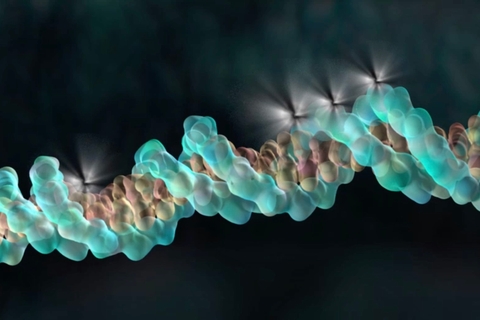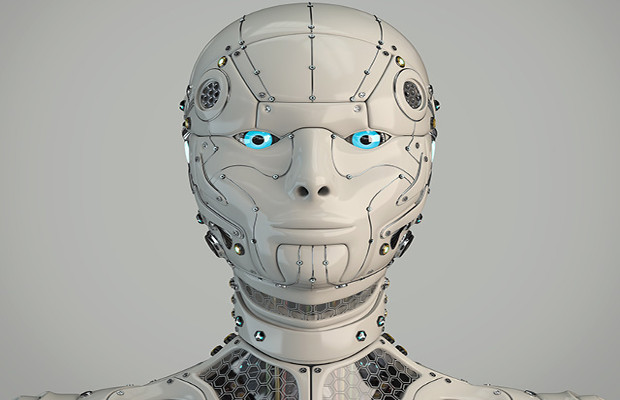
by Nicholas Mitsakos | Artificial Intelligence, Book, drug discovery, Economy, Financial Technology, Green Energy, Transformative businesses, Writing and Podcasts
AI as a powerful tool under human direction, not an autonomous entity with consciousness or emotions. It examines artificial intelligence’s opportunities, limitations, and risks while giving a reality check to the hyperbole and fears.
The first and most crucial principle in understanding AI is recognizing its inherent nature as a tool, a creation of human ingenuity designed to augment, rather than replace, human intelligence. AI systems, at their core, are complex algorithms capable of processing and learning from data at a scale and speed unattainable by human cognition.
However, it is an unprecedented, powerful tool that can permeate every aspect of society, industry, and human ingenuity globally. Its impact can be equivalent to Prometheus giving humans the gift of fire.

by Nicholas Mitsakos | Artificial Intelligence, Biotechnology, Book Chapter, crispr, drug discovery, Health Care, Innovation, Science, Writing and Podcasts
The first gene-edited approved drug (treating sickle cell anemia) is the first commercial rewriting of human genomes. Is this a new “Golden Age” for medicine? There is great promise, and the potential to treat unmet medical needs, scale dramatic innovations to commercial applications, and transform life sciences is enormous. Since every medicine is an intersection of scientific, technical, and clinical understanding, many new treatments are suddenly arriving because of the convergence of dramatic advancements in science, technical knowledge, and clinical results. Modern medicine is witnessing a transformative era of groundbreaking innovations and technological advancements. We are witnessing a renaissance in drug treatment driven by innovations in immunotherapy, weight management, vaccine development, gene editing, and AI. These advances reshape medical treatments and fundamentally alter our approach to health and disease. As these technologies mature and their applications broaden, the future of medicine holds unprecedented potential for improving human health and longevity. A golden age – with a bit of hype.

by Nicholas Mitsakos | Artificial Intelligence, Book Chapter, drug discovery, Green Energy, Innovation, Public Policy, Science, Technology, Transformative businesses, Writing and Podcasts
The era of artificial intelligence is here, and it’s generating despair and fear over the loss of control and the worry that artificial intelligence is about to unleash killer robots and enslave humanity. Perhaps…or, something else. Artificial intelligence will improve lives and generate greater access to education, improve healthcare, and advance climate science. Among many other improvements, AI’s benefits greatly outweigh its costs. AI has its costs since everything comes with a price (there are always both sides to the ledger), but the extraordinary benefits that artificial intelligence can unleash are worth the effort. Don’t slow down, pause, or restrict research, development, and AI applications. Prometheus gave the world fire and while we can still cause great harm, it was among the single greatest advancements for humankind. Artificial intelligence can be the same thing for our modern-day recipients of fire from the gods. But, we can’t be naïve. We can still burn the earth down if we are not careful. AI will not destroy the world – and is more likely to save it. I’s trajectory points towards a future where it not only enhances technological capabilities but also enriches human lives. Its evolving role will be characterized by a synergy between human and artificial intelligence, propelling societal progress and opening new frontiers of innovation and discovery is not just a technological advancement; it’s a catalyst for a new era of human endeavor. Its impact is vast, touching every aspect of our lives and work. As AI continues to evolve, its role in shaping our society and driving innovation will only become more significant, opening new horizons for growth, creativity, and human potential.

by Nicholas Mitsakos | Artificial Intelligence, Biotechnology, Book Chapter, drug discovery, Green Energy, Health Care, Innovation, Public Policy, Science, Technology, Transformative businesses, Writing and Podcasts
Our most intractable problems cannot be solved with behavior modification, conservation, or our existing technology, regardless of its advanced or widespread applications. Only new knowledge creating innovative solutions can address our most intractable problems. This can only be achieved through basic scientific discoveries and then combining these discoveries with enterprise-based innovation, commercial discipline, and competition. Innovation, creativity, and competitive dynamics create the most effective innovations, the best solutions, and the most sustainable companies. Developing the best public policy as well as the best structure to enable innovative and creative solutions, as well as the economic incentive to scale these opportunities and make them economically sustainable. Central planning, bureaucratic industrial policy, government-led economic management, and dictatorial focus have always failed, and always will.

by Nicholas Mitsakos | Artificial Intelligence, Biotechnology, drug discovery, Transformative businesses, Writing and Podcasts
Discovery, innovation, and practical application are never a straight line and, the best analogy is “the broken road.” Our greatest discoveries and advancements have confusing, uneven, and broken pathways that often lead somewhere astonishing – even though at the outset the initial steps could never envision this as a final destination. Artificial intelligence is the embodiment of this concept. A powerful tool that can lead anywhere given the imagination and unlimited creativity of its users. There may be nowhere more impactful, generating therapies for unmet medical needs in record time, than artificial intelligence’s ability to mimic evolution in minutes. The real outcomes are still unpredictable, but the potential is unfathomable. AI languages that produce pictures seem to be initially relegated toward a combination of Tik-Tok influencers, outraged artists, and those with limited imaginations and creative skills. But now, AI-generated pictures can use text to direct specific protein designs with properties of shape, size, and/or function that make it possible for these new proteins to perform specific tasks on demand. This breakthrough may lead to more efficient and effective drug development and, the discovery in minutes of what evolution would otherwise have taken millions of years to develop.





